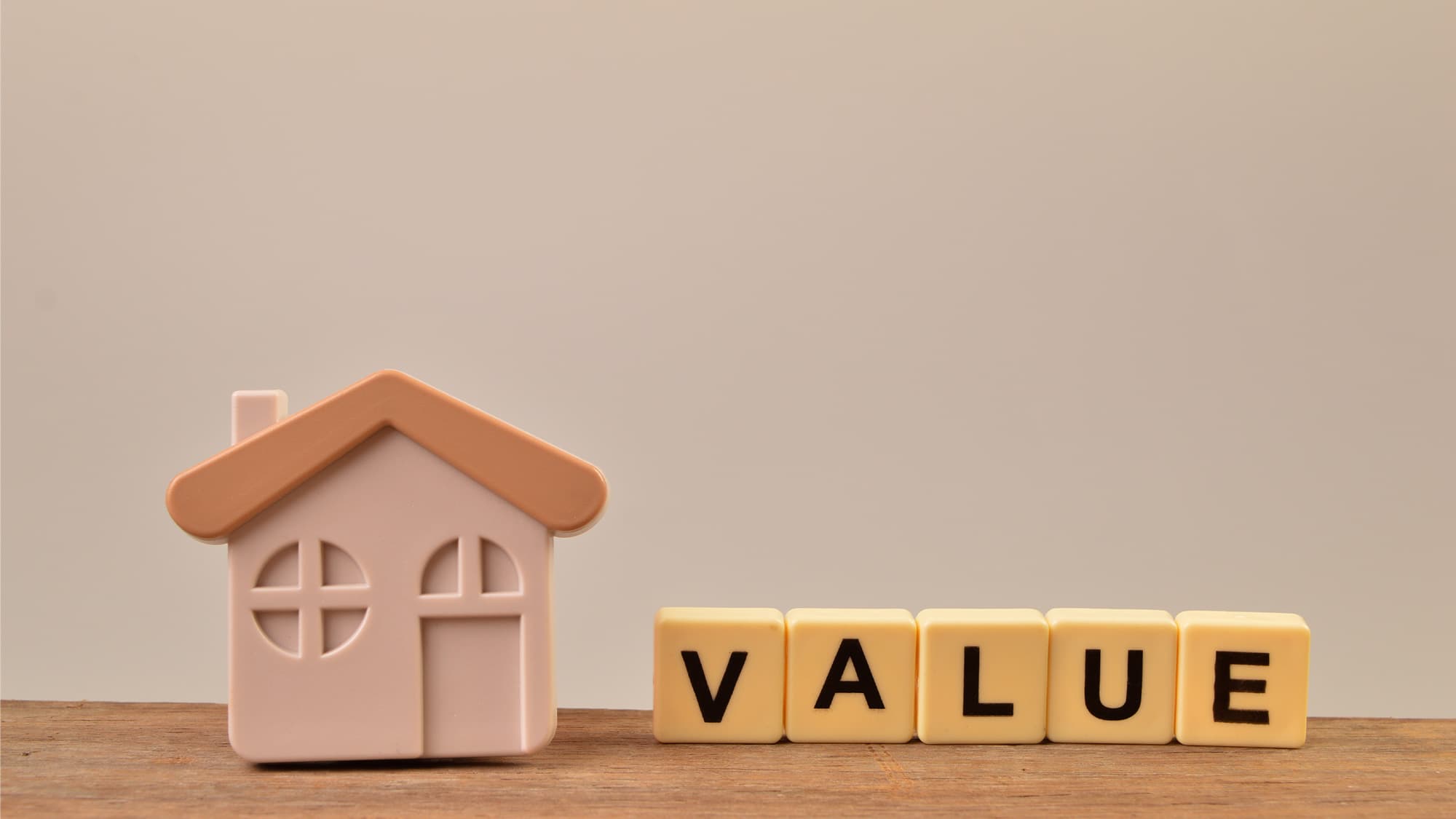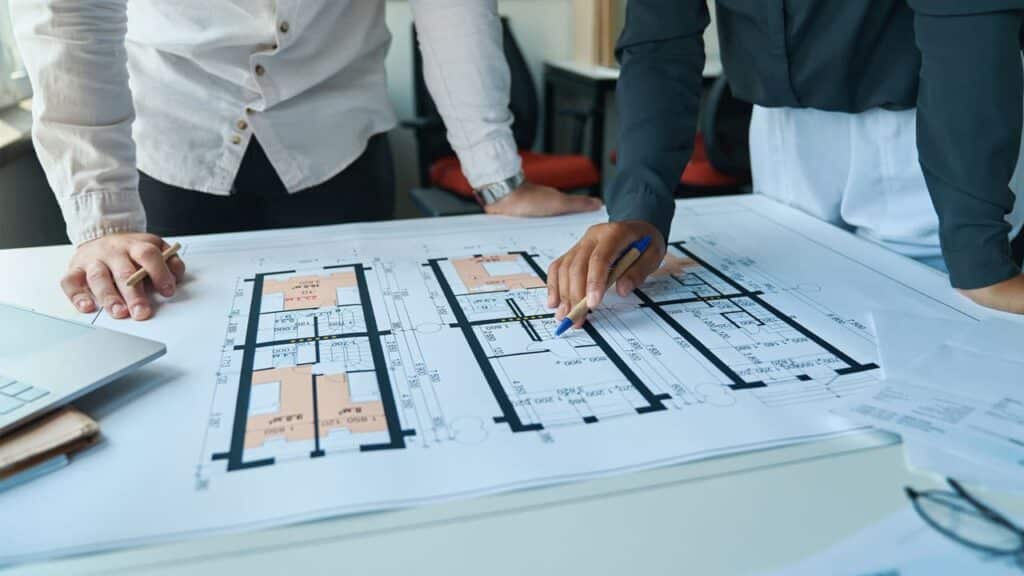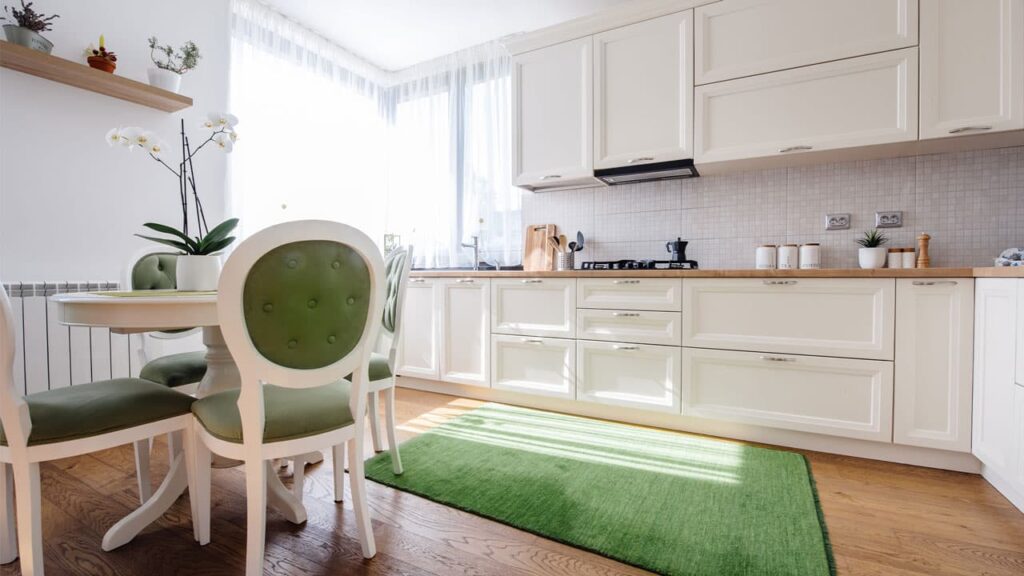Selling a house
is an important decision that requires a lot of planning. One of the main factors to consider is the selling price of the property. Not for nothing, calculating the right sale price is essential to attracting potential buyers and ensuring a fair and efficient transaction for all parties involved.
In this article you will find a practical and useful guide that will help you understand how to calculate the value of a property for sale.

Consider the square meters
The value of a property depends largely on its square footage and the area in which it is located. In fact, the average price per square meter can vary greatly from one area to another, even within the same city!
For example, a 100-square-meter apartment in a well-serviced residential area may be worth much more than a similar apartment on the outskirts of the city.
To find out the average value of properties in the area, several online tools can be used. By accessing the portal of the
Internal Revenue Service
, for example, the database of semiannual real estate listings can be found. These identify, for each homogeneous delimited area of the municipality (called the OMI zone), a range of minimum and maximum values per unit area in euros per square meter, related to the market and rental of real estate, depending on the type and state of preservation. In case there are several states of preservation for the same type of property, the prevailing one is still specified.
Another important portal to refer to is that of the Land Registry, which is useful for finding cadastral plans, i.e., 1:200-scale technical representations of a real estate unit that provide information on boundaries, subdivision, interior destination, and other measurements in accordance with cadastral regulations. Holders of real rights registered in the Land Registry or their proxies can request the cadastral plan free of charge.

The value per square meter changes from area to area
The value per square meter of real estate varies from area to area for several reasons. One of the main causes is the supply and demand of properties in the area where the property is located. For example, if there are a lot of people looking for a house in a certain area, the price of real estate in that area may increase significantly.
In addition, the location of the property also affects its value. If the house is located in a central area that is well served and close to services, the price may be higher than a property located in the city’s suburbs (in general, of course, keeping in mind that this specification may vary from suburb to suburb).
Other factors that may influence the price per square meter are the presence of green areas, public parks, infrastructure, schools and universities nearby. These facilities and special features can understandably make the area more desirable and thus increase property values.
In addition, the quality of the building and finishes can also affect the price: a newly built or fully renovated property is worth more than one that is old or in need of renovation.
Covered areas, uncovered areas and appurtenances
Covered areas, uncovered areas , and outbuildings are very important elements to consider when evaluating a property. In fact, these can affect its value and attractiveness to potential buyers.
Covered areas are the areas inside the property that can be used as living spaces, such as bedrooms, living rooms, and kitchens. These areas are usually valued according to their square footage and distribution within the house.
When referring to uncovered areas, however, this refers to any gardens and yards exclusive to the property, while appurtenances include all areas “intended in a lasting way to serve or adorn,” such as terraces, balconies, basements, attics, sheds, parking spaces , and attics. These surfaces can be used as livable spaces, for relaxation, refreshment, service or home organization.
In general, uncovered areas and outbuildings undoubtedly increase the value of the property, especially if they are cared for and well maintained. However, it is also important to consider the maintenance of these surfaces, as they can require significant additional costs.

The calculation of surfaces
The commercial floor area of the property includes all covered areas, weighted areas such as terraces and balconies, and percentage shares of appurtenant areas.
The net usable floor area should be included at 100%, while the perimeter walls of the building should be calculated at 100% up to a maximum of 50 cm. Communal perimeter walls should be calculated at 50% up to a maximum thickness of 25 cm. For the attic, only 75% of the area is taken into account if it has a minimum height of 240 cm and only 35% if the height is less than 150 cm. For mezzanines, the 240 cm principle always applies, and if the height is higher, 80% of the area is counted, and 15% if it is not habitable.
For verandas, 80% of the area is considered if the finishes are similar to the main rooms and 60% without similar finishes. For taverns and habitable basements, 60 percent of the area is considered for a minimum average height of 240 cm.
The second category concerns ornamental surfaces such as the balconies and the solar pavements, of which 25% is considered, the terraces and the lodges, of which 35% are counted, the porches and patios, computed at 35 percent; courtyards and yards, of which 10 percent is counted; and gardens and areas belonging to apartments or villas and cottages, of which 15 percent and 10 percent is counted, respectively.
The third category concerns the surfaces of accessory rooms and parking lots such as the wineries (20%), the attics (20%) and the accessory rooms (20 percent), technical rooms (15 percent), garages (45, 50 and 60 percent, depending on whether in collective garage, not connected to main rooms or connected to main rooms), and covered (35 percent) and uncovered (20 percent) parking spaces.
The variables of property type and area in calculating value
Property type refers to the building-architectural features that distinguish it from others: a villa, for example, is different from a condominium apartment. Instead, area is determined by its square footage.
The type of a building affects its value, as some have more demand in the market than others.
For example, apartments are generally in higher demand than townhouses because they are more easily purchased, so their value may be higher. However, the type of property alone is not sufficient to determine its value; it must be evaluated along with other factors, such as location, general condition of the property, and demand.
The area of the property has its own weight in determining its final value, as generally a larger property will command a higher price than a smaller one. However, square footage is not the only element to consider, but also the distribution of space and functionality of the property. A 100-square-meter apartment with a functional layout and well lit can be worth more than a 120-square-meter apartment with unlivable spaces and poor lighting.
There is to be considered, however, contrary to what one might think, that often the value per square meter decreases as the area-therefore square footage-of the property increases. A 100-square-meter house may have a higher value per square meter than a 300-square-meter house, even if in the same area, because such large properties are less in demand by the buying public.
How to calculate the value of a property: features and other elements that affect the value of the house
Other features of the property can greatly affect the calculation of its value. These elements can be related to its structure, finishes, presence of advanced technologies, maintenance, and natural light.
Natural light is an important element to consider when evaluating a property. The presence of large windows, balconies or terraces that allow natural light to enter can increase the final value, as this type of lighting makes spaces brighter and more comfortable. It can also help reduce energy costs.
The finishes of the property should be considered. A home with high-quality finishes, such as hardwood floors, wood fixtures or bathrooms finished with marble, may have a higher value than one with low-quality finishes. In addition, modern and designer finishes are usually highly valued by potential buyers.
The presence of advanced technologies, such as underfloor heating systems or home automation, can affect the calculation, especially in a market that is becoming increasingly oriented toward sustainability and reduced consumption.
Finally, the presence of any structural defects or maintenance issues in the property obviously have a negative influence on its value. For example, a roof with water seepage, flooring with lifting problems, or substandard electrical wiring can significantly lower the price and require heavy maintenance.

The coefficients of merit
Coefficients of merit are another variable to consider when calculating property value. These coefficients can increase or decrease the value of the home.
The first type of coefficients concerns the floor of the property. According to the plan, the coefficients are as follows:
the basement has a coefficient of -25% regardless of the presence of the elevator; the ground floor or elevated floor has a coefficient of -10% if there is the garden and -20% without a garden; the second floor has a coefficient of -10% regardless of the presence of the elevator; the second floor has a coefficient of -3% with elevator and -15% without elevator; the third floor has a coefficient of 0% with elevator and -20% without elevator; i upper floors have a coefficient of +5% with elevator and -30% without elevator; thetop floor has a coefficient of +10% with elevator and -30% without elevator; thepenthouse has a coefficient of +20% with elevator and -20% without elevator.
The second type of coefficients concerns the state of the property. For vacant dwellings, the coefficient is 100%; for leased dwellings, the coefficient is reduced by -20%; for seasonal leases, the coefficient is -5%. In addition, the age of the property can affect the value, with the following coefficients: to be renovated (-10%), in good condition (0%), renovated home (+5%), finely renovated (+10%), new construction (+10%).
An additional coefficient concerns the provision of a heating system. If the system is self-contained, the coefficient is +5%; if it is centralized, the coefficient is 0%; if it is centralized with metering, the coefficient is +2%; if the system is absent, the coefficient is -5%.
Finally, the last coefficient to consider is the exposure and view of the property. An exterior panoramic view can increase the value by 10%, an exterior view the value by 5%, an interior view can decrease the value by 5%, and a completely interior view can decrease the value by 10%.
The comparative evaluation of the house
By reading our guide on how to calculate the value of a property, you will have realized that no one house is totally comparable to another, and often calculation percentages and coefficients risk returning a decontextualized valuation.
Therefore, it is also a good idea to proceed with a comparative evaluation of the property.
The real estate agency Idee & Immobili, for example, also analyzes the amount of other properties available for sale, both from agencies and from individuals, sorting them by number of rooms, type (apartments, villas, garage), and condition of the property (new, renovated, to be renovated, under construction).
We also assess the presence of elevator and garage, and conduct a price-per-square-meter analysis of similar properties sold in the area of interest, using authoritative sources such as the Real Estate Market Observatory (OMI) of the Internal Revenue Service.
Referring to advanced software, we identify the right market segment in which to place the property for sale, and we search and analyze comparable properties to determine the right price range and provide information on the number of new constructions in the area, the average time on the market for properties (calculated in days), similar properties for sale, and similar properties for rent.
Conclusions
Now that you have seen how to calculate the value of a property, you understand that it is important to consider various factors such as commercial space, energy class, geographical location, cadastral category, and other coefficients of merit. However, as we have seen, it would also be best to refer to a professional and accurate comparative evaluation of the property, getting assistance from real estate experts.
That’s why we recommend that you turn to a specialized real estate agency such as
Ideas & Real Estate
, where you can find qualified consultants and professionals who can accurately evaluate your property and provide you with an appropriate price indication.
Contact Ideas & Real Estate now for personalized advice and to start the process of selling your property as quickly and effectively as possible.


